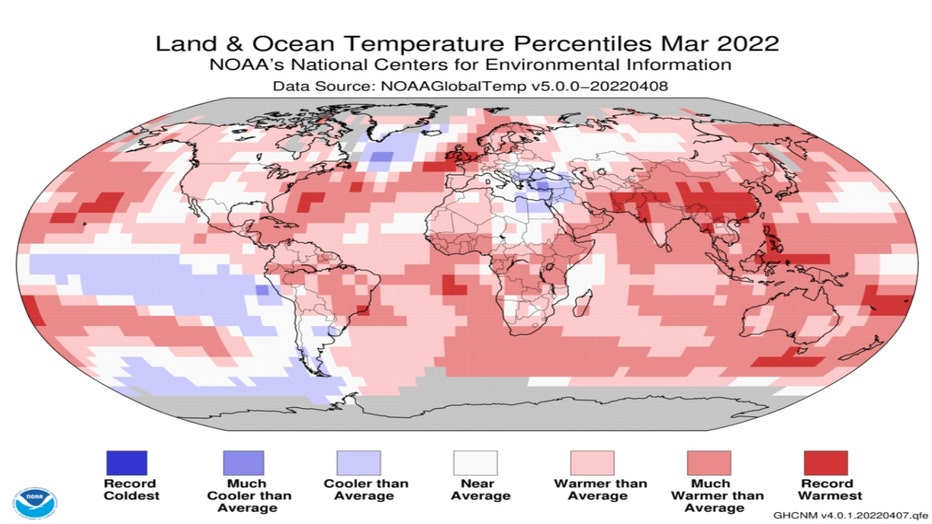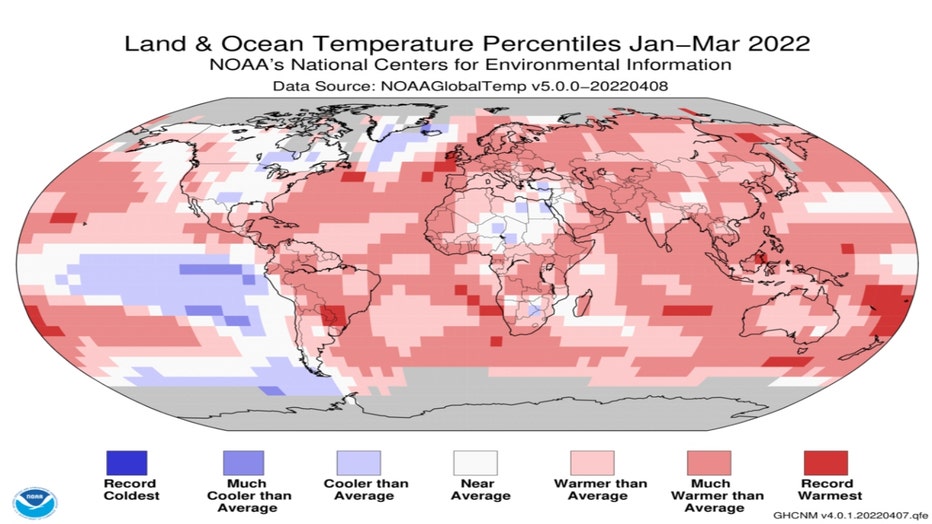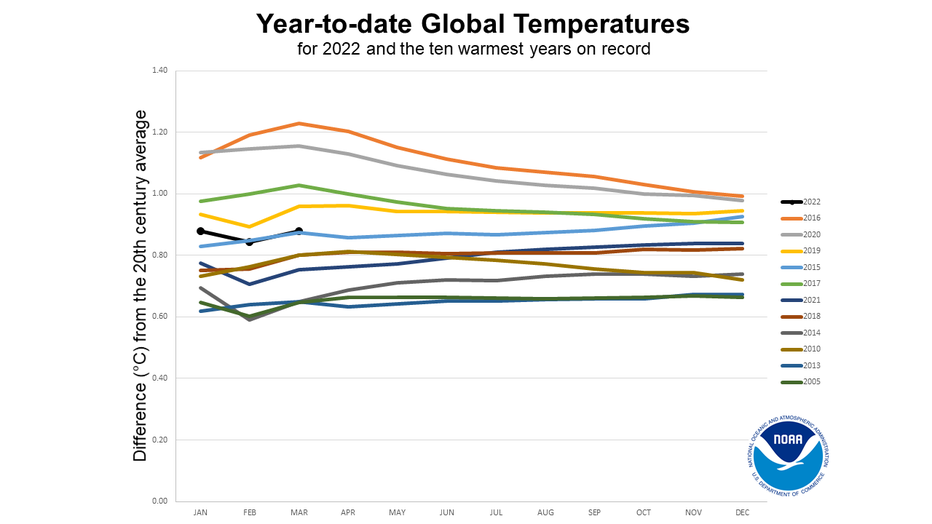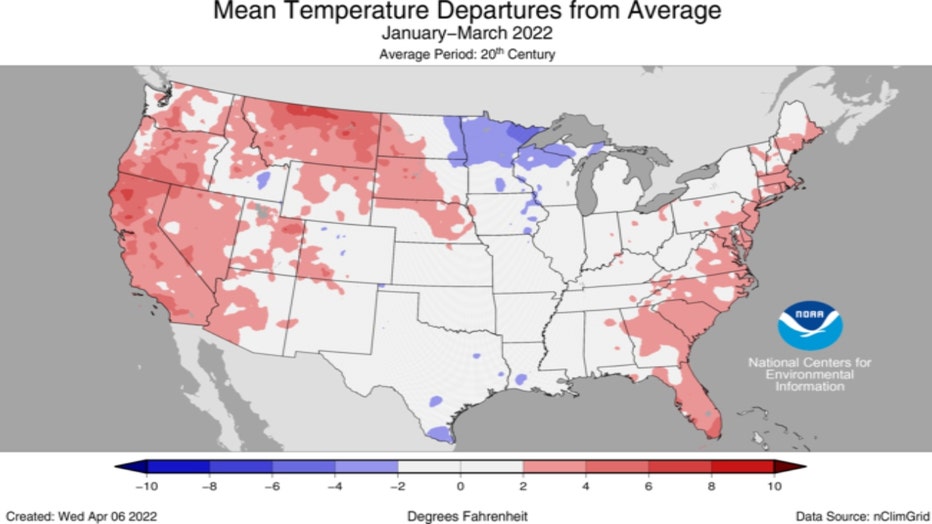Earth is still running a fever, climatologists say
Chicago - It's official: Earth still has a fever.
NOAA's National Centers For Environmental Information announced Earth just had its fifth-warmest March on record. The global land and sea surface temperature last month was 1.71 degrees above the 20th century average.

The period from January through March this year was also the fifth-highest on record. Even though the continuation of our current La Niña could cool the planet, it is a virtual lock that this year will rank among the top ten warmest years on record. The January–March global surface temperature was 1.58 degrees above average. The five warmest January–March periods have occurred since 2016.

There is a greater than 99.0% chance 2022 ends up on the list of top ten warmest years in our 143-year record. There is nearly a 40% chance it could be a top 5 year.

The US has seen a warmer than average year-to-date too. Here are some hilights from the NCEI report for March:
- During March, the average contiguous U.S. temperature was 44.1 degrees, 2.6 degrees above the 20th-century average. This ranked in the warmest third of the 128-year period of record.
- A large cold-air outbreak across the central U.S. occurred during the second week of March. Despite this cold spell, temperatures for the month as a whole were above average across much of the West and from the Midwest to the East Coast. Temperatures were below average in pockets along the western Gulf Coast during March.
- The contiguous U.S. average maximum (daytime) temperature during March was 56.8 degrees, 3.8 degrees above the 20th-century average, ranking in the warmest third of the record. Above-average maximum temperatures blanketed much of the contiguous U.S. Near average daytime temperatures were observed from the Upper Mississippi Valley to the Gulf Coast and portions of the Southwest.
- The contiguous U.S. average minimum (nighttime) temperature during March was 31.5 degrees, 1.5 degrees above the 20th-century average, ranking in the warmest third of the record. Above-average temperatures were observed across much of the West and from the Midwest to the East Coast. Below-average nighttime temperatures were observed from the western Gulf Coast to portions of the Southwest.
- During March there were approximately 2 times as many warm daily records as compared with cold records. As of April 5, there were 7,190 record warm daily high (3,722) and low (3,468) temperature records and 3,838 record cold daily high (1,944) and low (1,894) temperature records.


